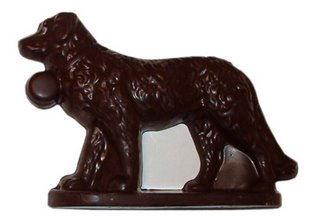 Shui
Shui
Water
This Friday offers a timely, symbolic opportunity to make some improvements in your life: make a pact with yourself to “go with the flow.”
If you live anywhere in the Americas, September 22, 2006 is the day of both a New Moon and the Autumnal Equinox. In the primal, universe-creating Chinese wheel of the year, the Autumnal Equinox and the Moon are both represented by the energy phase or "element" of water. Just as water flows underground, water energy is yin and dark and sometimes hidden like the New Moon. Just as the running water of a stream can bore through a mountain, or a creeping glacier can gouge out a gorge, water energy is very powerful. The secret of water energy is its constant movement. When water becomes stuck or stands still, it loses all its power.
When your energy becomes stuck, you lose all your power, too, your power to be balanced and healthy. In Chinese Medicine, illness is caused by stagnant internal energy known as “qi” or “chi”, or the interrupted flow of your internal energy. In day-to-day life, stress is often caused by being stuck as well, stuck in a boring rut or a bad mental or emotional situation which can lead to physical illness.
To be balanced and healthy, you must make the decision to “go with the flow.” The counterculture of the 1960's may have popularized that phrase but the concept originated with the writings of Lao Tzu (considered to be the father of Daoism) a few thousand years earlier in China. He wrote about the advantages and benefits of living in balance and harmony with the natural world. In Chapter Eight of his Dao De Jing (a.k.a. Tao Te Ching), he explains the energy that is symbolized by water and the reasons to emulate it.
Below are two versions of Chapter Eight; the translation by Gia-fu Feng and Jane English, and Steve Mitchell's translation.
~~~~~~~~~~~~~~~~~~~~~~~
Tao Te Ching - Text Only Edition
Translated by Gia-fu Feng and Jane English, Vintage Books, 1989
The highest good is like water.
Water give[s] life to the ten thousand things and does not strive.
It flows in places men reject and so is like the Tao.
In dwelling, be close to the land.
In meditation, go deep in the heart.
In dealing with others, be gentle and kind.
In speech, be true.
In ruling, be just.
In daily life, be competent.
In action, be aware of the time and the season.
No fight: No blame.
~~~~~~~~~~~~~~~~~~~~~~~
Stephen Mitchell's Translation
The supreme good is like water,
which nourishes all things without trying to.
It is content with the low places that people disdain.
Thus it is like the Tao.
In dwelling, live close to the ground.
In thinking, keep to the simple.
In conflict, be fair and generous.
In governing, don't try to control.
In work, do what you enjoy.
In family life, be completely present.
When you are content to be simply yourself
and don't compare or compete,
everybody will respect you.
~~~~~~~~~~~~~~~~~~~~~~~~
A few final words of wisdom from a gentleman whose works and words I have long admired: the writing "Water" from Everyday Tao by Deng Ming-Dao, Harper San Francisco, NY, 1996,
Shui
Water.
The Chinese character shows the flowing of a stream.
Water is life.
When the ancients and their students stopped to rest by a pure flowing stream, the teachers compared Tao to water.
Water is flowing.
Every drop is made of the same substance. Water never fears being divided, because it knows it will flow back together in time. It is eternal.
Water is powerful.
Although it can be soothing, comforting, and cleansing, it can also be enormous, mighty, and overpowering. Its nature is constant. It is true to itself at any extreme.
Water is profound.
In the depths of the lakes, in the darkness of the oceans, it holds all secrets. It is dangerous. It is mysterious. Yet life came from those depths.
Water is unafraid.
From any height, it will plunge fearlessly down. It will fall and not be injured.
Water is balanced.
No matter what the situation is, water will seek its own level as soon as it is left alone. Water will always flow downward to the most stable level. It conforms to any situation in a balanced way.
Water is nourishing.
Without water, no plant and no living creature could survive.
Water is still.
It can be completely still, and in its stillness, mirror heaven perfectly.
Water is pure.
It is transparent, clear, needing neither adornment nor augmentation.
For all these features -- to be flowing, powerful, profound, unafraid, balanced, nourishing, still, and pure -- one who would follow Tao need only emulate water in every way.
~~~~~~~~~~~~~~~~~~~~~~~~~~~~~
Now there's a formula for a reasonable and relaxed way of life. Don’t wait until Friday! Start today to "go with the flow."

